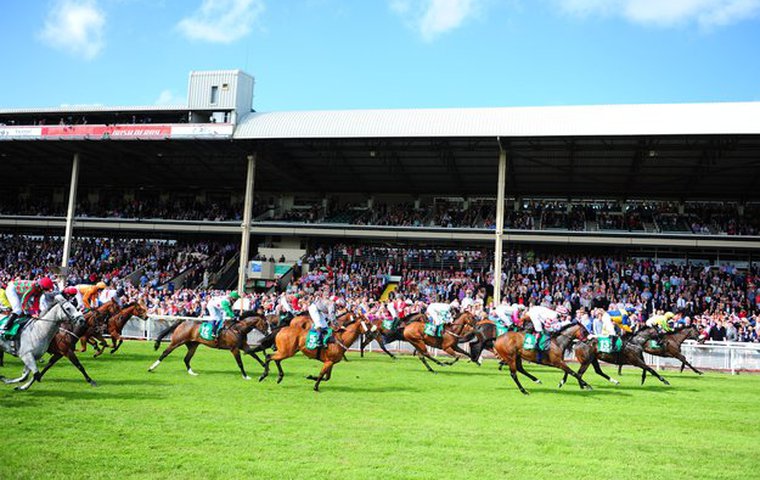
Europe and America are two racing jurisdictions separated by common challenges and opportunities. Three major challenges face the horse racing industry: to find and influence potential racegoers, to ensure that racing rivals other sports, and to deal with the issue of medication.
Ireland has a remarkably loyal group of racing fans. More than one in five people (22 percent) in Ireland have expressed an interest in racing, according to our market surveys over the last 10 years. The male-to-female ratio is about 60-to-40, similar to other mainstream sports, and the distribution is fairly even across age groups with the exception of the under-represented under 24 group and the over-represented 65 and older group.
Despite our loyal fan base, attendances in Ireland have been under pressure, falling from a high of 1.5 million in 2007 to 1.24 million in 2013, mainly due to the terrible recession that has gripped our country. There is some satisfaction that while disposable incomes have fallen by 44 percent from their peak, total racing attendances have fallen by only 17 percent, but this is tempered by the fact that falling gate, sponsorship, and hospitality receipts are putting many racecourses under real pressure.
To counter this trend, Horse Racing Ireland runs national marketing campaigns to attract and retain racegoers with a mixture of national advertising, mainly in radio, print, and online. We have kept our investment in marketing reasonably high over the past three years to keep our visibility in the market and to retain the interest of our fans – even if they are unable to spend at the same level as before. Our figures for 2013 showed a 4 percent increase in attendances and the best statistics for pool betting and sponsorship we have seen in five years. Our customers are coming back, and we believe that 2014 will really pick up on the broader economic recovery.
Also, the standard of facilities at racecourses is extremely important for attracting people to go racing, which is why our two major flat racecourses, Leopardstown and the Curragh, are being redeveloped.
The second major challenge is the need for racing to compete successfully with the championship events of other sports. This is about all areas of horse racing working together to compete against the challenges provided by those sports.
As chairman of the European Pattern Race Committee, one of the most exciting developments in recent years has been the creation of British Champions Day at Ascot in October. This meeting was introduced with the objective of staging five high-value Group 1 races over all of the key racing distances and to create an appropriate finale to the British flat racing season.
From 2014, Ireland will stage a two-day meeting in the second week in September, three weeks before Prix de l’Arc de Triomphe meeting in Paris, featuring five Group 1 races, including the world-famous Irish Champion Stakes. The Saturday of this meeting will take place at Leopardstown and Sunday will be at the Curragh, presented together as “Irish Champions Weekend.”
This new event creates a very exciting opportunity for European racing with the prospect of 18 Group 1 races within a five-week period in each of the three major European racing centres. With strong prize-money and imaginative marketing, a whole new story can be created around the end of the European flat season.
Lastly, harmonisation of international standards for medication in racing presents us with our greatest challenge and is now central to the perception of the sport’s image and integrity.
In 2009, Louis Romanet, chairman of the International Federation of Horse Racing Authorities (IFHA) addressed the Round Table Conference, stating bluntly that the medication issue is the most important issue for the image of the Thoroughbred industry around the world.
Romanet’s words have never been more true as racing had a game-changing moment in 2013 with the discovery that a large number of horses in training in the Godolphin stables of Mahmood Al Zarooni in Newmarket tested positive for anabolic steroids. The issue was dealt with swiftly by the British authorities and Sheikh Mohammed moved quickly to introduce the most stringent regime possible in Dubai.
This development showed that there is a major disparity between the rules implemented in different countries around the world in relation to anabolic steroids. This situation is simply not credible and in the future, racing must have a single worldwide standard for anabolic steroids.
The IFHA must formulate an international standard relating to the use of anabolic steroids and that this standard must be applied to all racing jurisdictions. This standard must be at least as high as that applied by World Anti-Doping Agency for other sports, where anabolic steroids are prohibited at all times
Things that we have taken for granted in the past can no longer be so in the future and we should not allow horses that are trained in jurisdictions with one set of rules for anabolic steroids to compete against horses trained in another jurisdiction under a different regime.
Furthermore, in the future we should not give the same black-type in sales catalogues for races run in countries with different medication regimes. These issues go to the very heart of international racing and international trade in bloodstock, but the current anomalies must be eliminated. This is essential for the future credibility of our sport and of the bloodstock industry.
---
Brian Kavanagh is Chief Executive of Horse Racing Ireland. Read his article on Irish breeding and racing.


